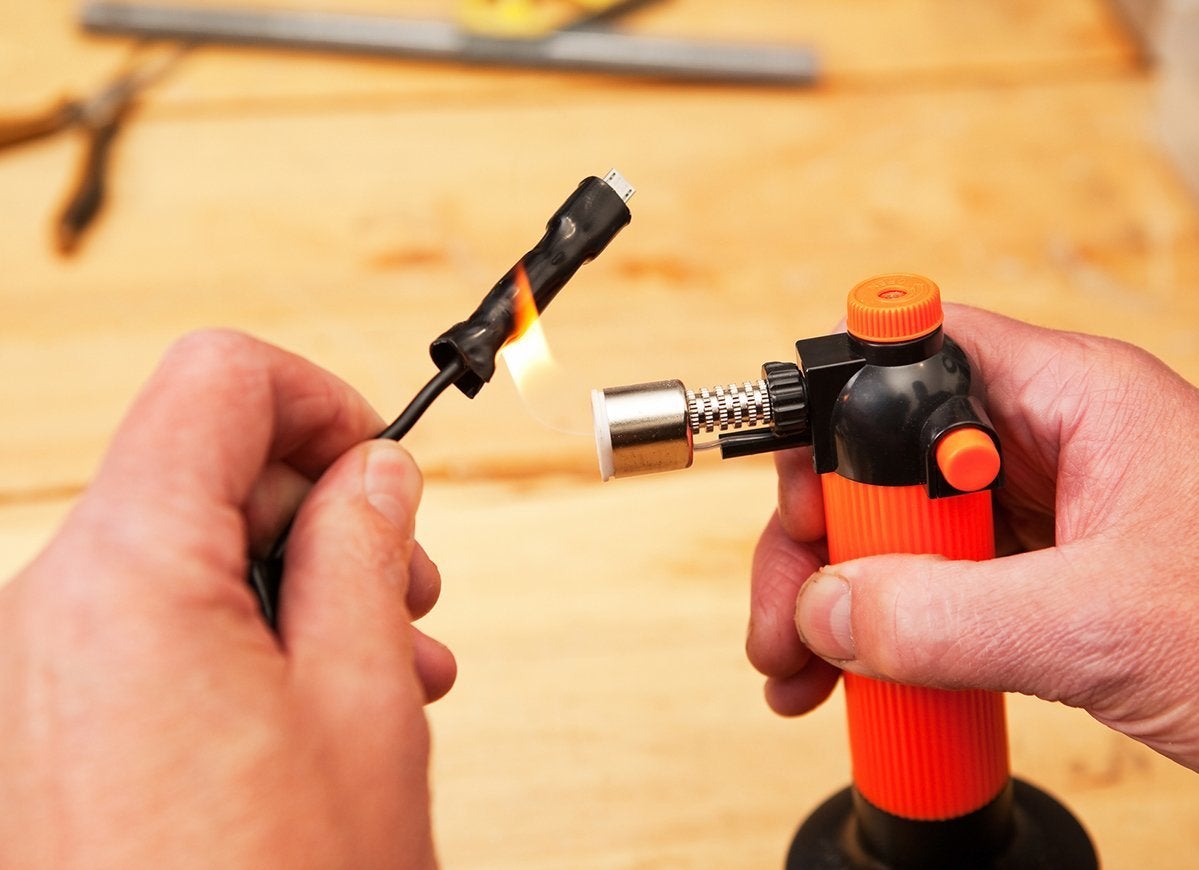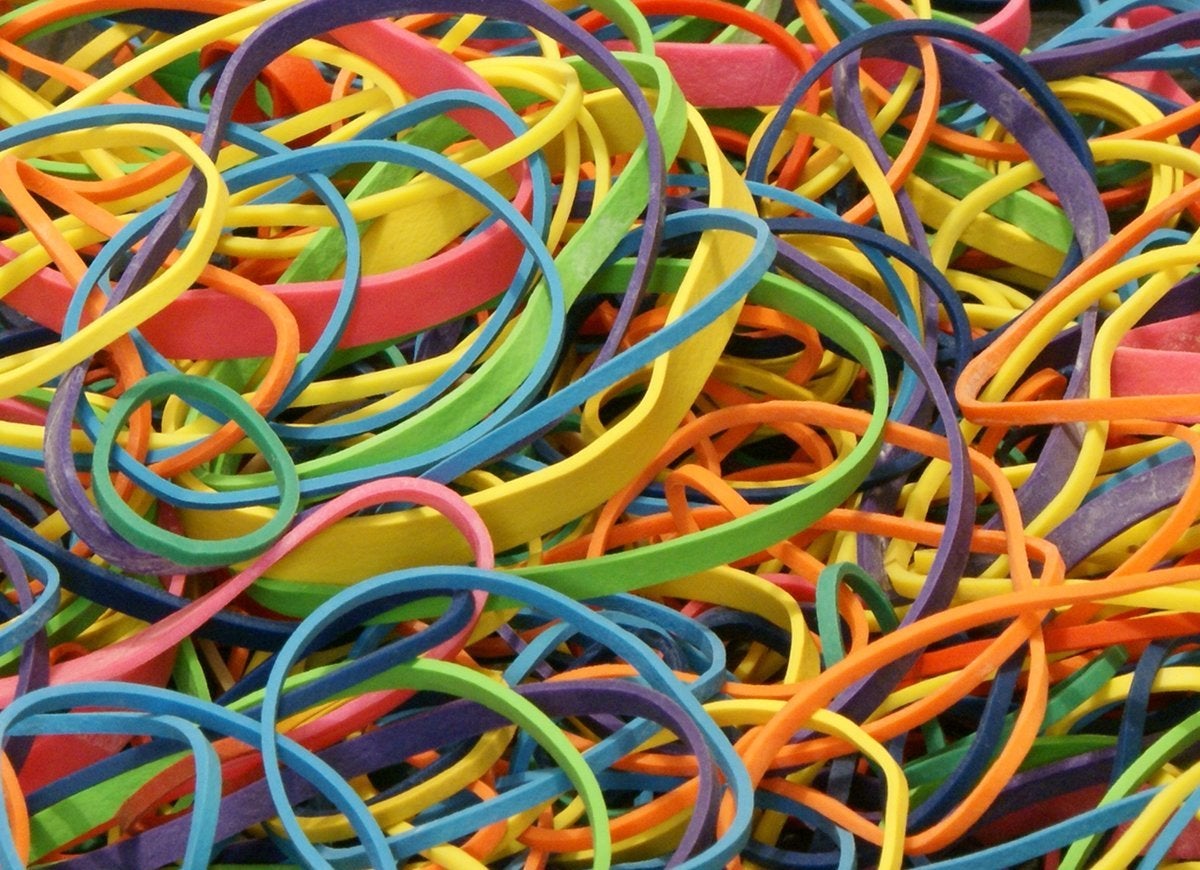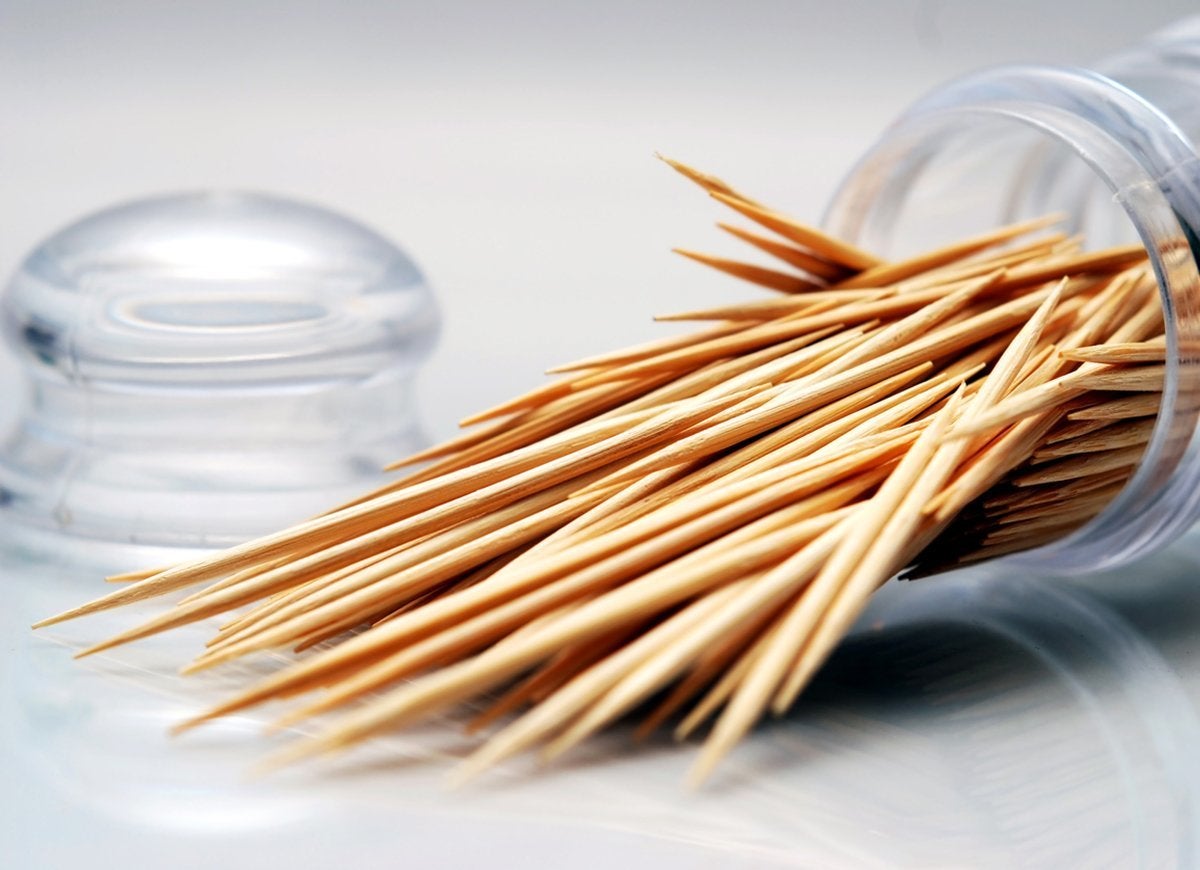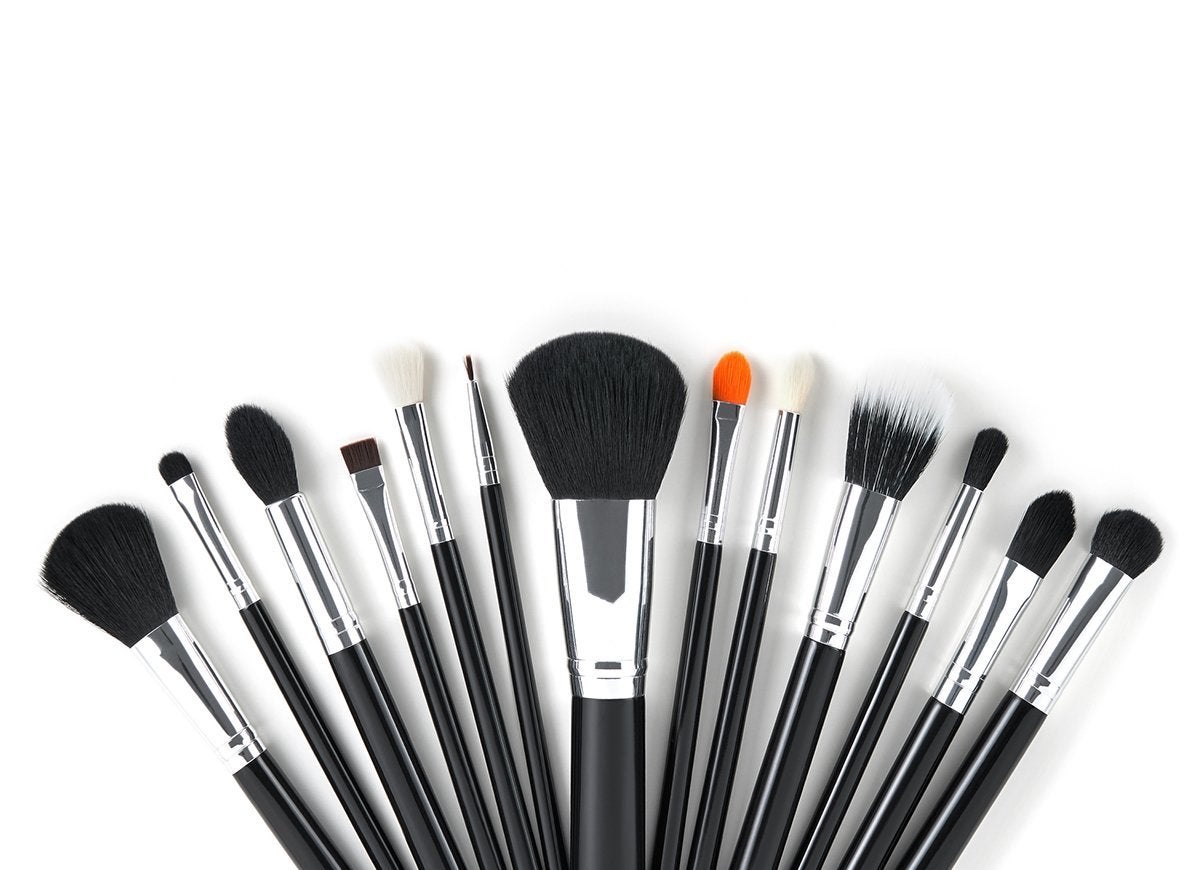We may earn revenue from the products available on this page and participate in affiliate programs. Learn More ›
Home Advice You Can Trust
Tips, tricks & ideas for a better home and yard, delivered to your inbox daily.
Chalk

Chalk isn’t just for drawing on sidewalks; it has myriad uses for the DIYer. If you are sanding something, rub the surface with chalk and keep sanding until all the chalk is gone to get a level, evenly sanded surface. Chalk also absorbs moisture, so stashing a few pieces in your toolbox will help prevent tools from rusting. As if that’s not enough, it’s also good at removing grease and oil stains, and can prevent flathead screwdrivers from slipping on a screw.
Butter Knife

The humble butter knife has uses that go far beyond breakfast. A butter knife can stand in for a flathead screwdriver; a light hammer to tap in small nails or loosen a tight lid; a small pry bar; an opener for paint cans; a scraper to remove gum, wax, peanut butter, or candy from carpeting, upholstery, and flooring; a caulk spreader; and a spackle knife. You can also use a butter knife to remove hair from rotating vacuum brushes or as a temporary shim.
Selfie Stick

Sometimes, you just have to see around a corner, under the floorboards, behind a wall, or into a tight space, and you don’t want to have to cut a gigantic hole to do it. Use a selfie stick to hold your mobile phone and take pictures inside a wall or other hard-to-reach place without damaging the exterior surfaces.
Heat-Shrink Tubing

Heat-shrink is great for working with wires, but you can also use shrink tubing to add a soft, insulating grip to metal tools, including wrenches, pliers, and screwdrivers; to prevent rope or cable ends from fraying; to add labels to wires or other items; to color-code wires or tools (if you have different colors of heat-shrink). You can also use heat-shrink tubing over chains to prevent rattling and noise; to make a temporary repair to a leaky pipe or hose; and to place multiple wires within one large piece of tubing to prevent tangles.
Lighter

Even if you are a confirmed nonsmoker, a disposable lighter can be handy to have around. In addition to lighting candles and starting a fire, you can use a lighter to loosen tight lids on bottles and cans; prevent rope ends from fraying; or heat up a stuck screw or nut to make it easier to remove.
Toothpaste

Toothpaste can do a lot more than clean your teeth: Non-gel toothpaste can remove crayon from walls, can be used in place of spackling compound to patch nail holes; can remove ink from fabrics; can remove watermarks from wood furniture; and can clean and polish chrome fixtures. You can also use toothpaste as a polish to remove scratches and scuffs from leather furniture or shoes. Be sure to rub gently and polish afterward with a soft cloth.
Toothbrush

Old toothbrushes are real multitaskers for your tool kit. Use toothbrushes to clean the tracks on sliding patio and shower doors; to clean computer keyboards; to clean window blinds, shades, and screens; to clean the grout lines between tile on floors and walls; to dust and clean up your power tools; and to clean out any other little nooks and crannies where dust and grime accumulate. You can also use a toothbrush as a small scrubber to help remove stains from clothing, carpets, and upholstery.
Rubber Bands

Holding things together is just a small part of what a rubber band can do. You can use rubber bands to help unscrew a stripped screw. With several rubber bands, you can make a good temporary grip for a tool or unscrew a tight jar lid. You can even use a rubber band wrapped around exposed electrical wires to create a temporary insulator. And the next time you tackle a painting project, wrap a large rubber band top to bottom around an open paint can to serve as a paintbrush scraper to keep paint from pooling around the rim.
Magnets

Small magnets can be used to clean up metal shavings in your workshop. Magnets are also handy for picking up scattered screws, nails, nuts, and bolts. Rubbing a magnet along the shaft of a screwdriver about a dozen times will magnetize the metal, making it easier to hold a screw in place. (Rub in only one direction.) Larger magnets are great for locating metal studs behind a wall or for holding small metal tools in place inside a metal toolbox.
Cardboard

A few folded-up pieces of cardboard can work wonders: Use a straight piece of cardboard as a stand-in for a straightedge to draw a cut line; make a temporary sheath for a utility knife or another sharp tool; and tape a piece of cardboard in place to stop a drill bit from slipping on tile, metal, or glass. Larger pieces of cardboard can be used to protect flooring from scratches and scuffs during a project or as cushioning underfoot or under your knees.
Toothpicks

Toothpicks can be used to touch up small scratches or dings in painted or stained surfaces; to serve as tiny “shims” for repairing wooden knickknacks and small furniture; and to clean dust and debris from around buttons, in cracks, and underneath small objects. You can also use toothpicks as filler material to patch small holes in wood furniture, moldings, or door frames.
Notepad

Measure twice, cut once…but what if you don’t remember the measurement? Always keep a small notepad in your toolbox to write down measurements, quantities, and parts lists. Also use it to keep track of the order in which you remove items when you take something apart so you can put the components back in the proper sequence.
Pencils and Erasers

Use pencils to mark where you need to drill a hole; to make cut lines on wood; to keep a record of measurements and quantities; and to record step-by-step instructions. Erasers can be used to extend battery life by rubbing the contact points; to remove sticker glue; and to clean scuff marks on wood and leather. You can also glue small pieces of eraser behind picture frames to serve as “bumpers” to prevent damage to the walls.
Nail Polish Remover

Nail polish remover typically contains acetone, which is a great multipurpose solvent. Use nail polish remover to get rid of glue and other adhesives; to eliminate shoe scuffs on tile, laminate, stone, or concrete flooring; to remove coffee and tea stains from china and porcelain; and to remove “permanent” marker on hands, walls, and tile (avoid using on wood or porous surfaces).
Nail Polish

Both clear and colored nail polish can come in pretty handy. Paint clear nail polish over labels to prevent the ink from running or smudging; paint costume jewelry with clear polish to stave off tarnish; use clear polish to tighten loose screws; and use it as a temporary liquid bandage if you cut yourself while working. Colored nail polish can be used to color-code wires, keys, and tools so you can find what you need at a glance.
Assorted Makeup Brushes

The small brushes that you use for applying makeup and grooming eyelashes can serve as small paintbrushes for touching up paint or stain and for cleaning dust, dirt, and debris from keyboards, remote controls, power tools, and sensitive electronic components. You can also use makeup brushes to clean around and in faucets, shower heads, and fixtures, and to remove debris from a sink strainer.
Furniture Feet

Those sticky-backed felt furniture feet can be used behind picture frames to prevent damage to walls; placed under candleholders, boxes, vases, and other knickknacks to prevent scratches or scuffs on wood furniture; and applied beneath furniture legs to steady an uneven table or chair. Larger furniture feet or sliders can be used as temporary shims under doors or window frames to help you get things level; can help you slide heavy equipment and tools; and can prevent scratches and scrapes on hardwood, laminate, tile, or stone flooring.
Old Pill Bottles

Pill bottles are great for keeping small pieces and parts organized during a project. You may also want to keep a couple of old pill bottles filled with a small assortment of different sizes of nuts, bolts, screws, and nails so you’ll always have these items close by for home repairs.
Petroleum Jelly

Petroleum jelly—familiar to most people by the brand name Vaseline—is a nearly universal lubricant that can silence squeaky doors and hinges; loosen stiff or sticky door locks; lubricate refrigerator drawers and sliding shelves; and help prevent doors, windows, cabinets, and drawers from sticking. Petroleum jelly can also remove watermarks and small scratches from wood furniture and flooring, and can loosen dripped candle wax and stuck-on chewing gum. Try using petroleum jelly in place of masking tape on windows during painting projects.
Zip Ties

Zip ties, also known as cable ties, come in a range of lengths and have a huge variety of uses. They can, of course, help organize wires, cables, and cords, but if you first cut small diagonal teeth along the length of a long zip tie, you can also use one to remove hair and other debris clogging a drain. Zip ties can temporarily child-proof areas of your home or workshop by securing cabinets and drawers. They can also be used as hangers in the pantry, kitchen, garage, or workshop, and outside you can use them to secure seedlings and vines to gardening stakes. In a pinch, zip ties can even work as temporary shoelaces!

I Made This One Smart Investment to Ensure My Plumbing and Appliances Last Longer
When I replaced my 15-year-old water softener, I did not anticipate exactly how much more efficient and intuitive this new model from Culligan would be.
